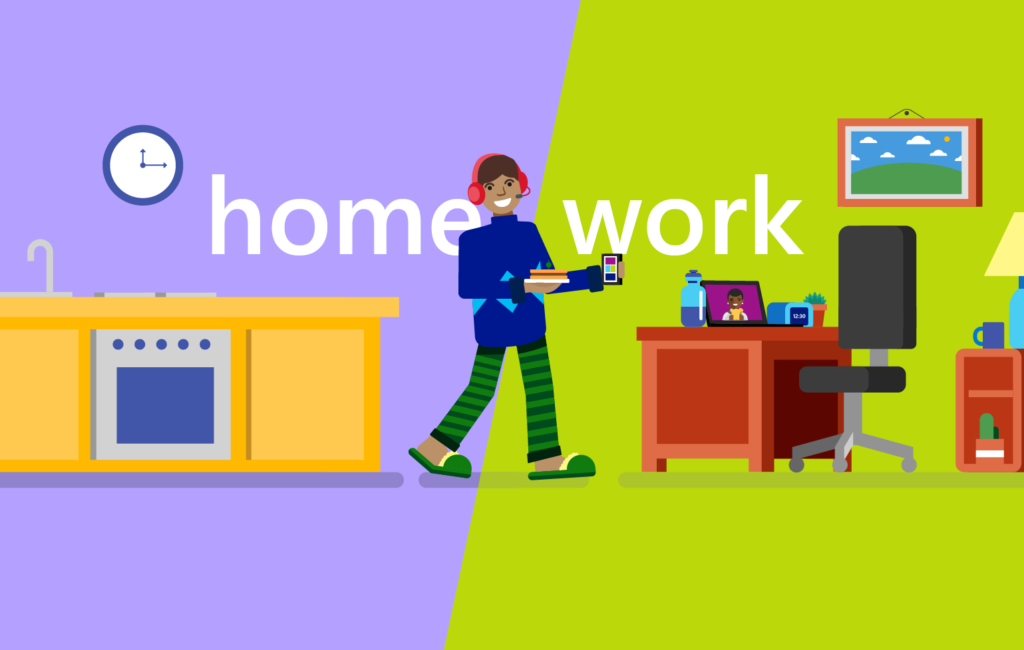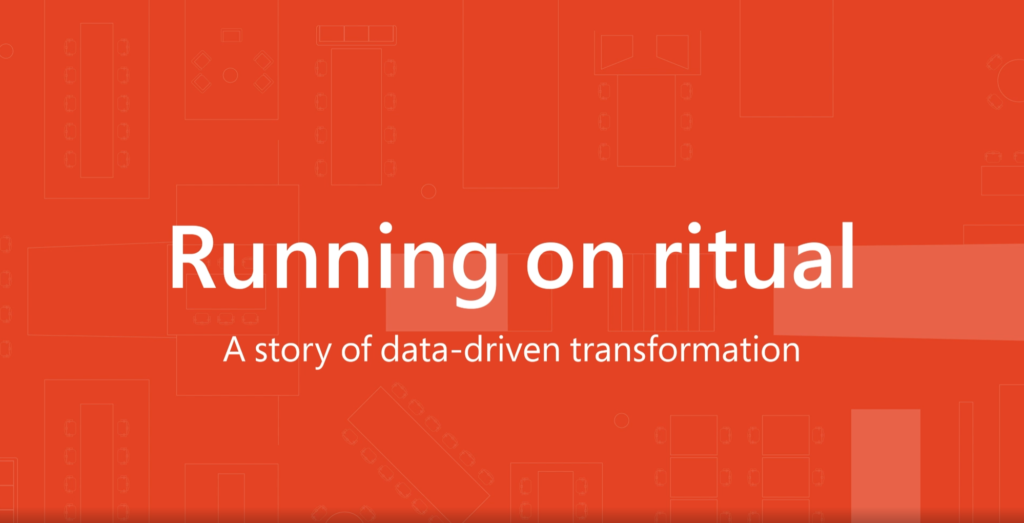
When employees all want the best desks, data wins
There was an era not long ago when Shanon Bernstine spent a lot of time with paper maps. And not just a few maps: upward of 50 of them, large swaths of paper spread across tables and carpeting the floors of Microsoft conference rooms, where the business manager would spend hours, even days, trying to puzzle out which employees should sit where.
Somewhere within those building blueprints marked with coffee cup rings lay the right answer. Getting to it? Well, that was more of an art than a science.
Workspace planning is a hot topic, and where people sit at their jobs matters significantly to both workers and companies.
Research from Cornerstone OnDemand and Harvard Business School found that companies placing the right type of workers in close proximity can generate up to a 15 percent increase in organizational performance. For an organization of 2,000 workers, strategic seating planning could add up to $1 million in profit. Meanwhile, according to research from Gallup, only 33 percent of U.S. workers are engaged, and actively disengaged employees cost the U.S. $483-$605 billion each year in lost productivity. Research has shown that workspace design is corelated to employee engagement and well-being.
But for many companies and teams, including Microsoft, the process of matching employees to workspace that works for them can be ambiguous, churning through people’s time and the business’s resources and impacting the culture if not done right.
The problem often comes down to a lack of understanding about how work really happens inside an organization. The solution, planners and leaders at Microsoft are finding, is data.
‘Can I get a window?’
Whenever the need arose to rearrange a team or move a group of employees into a new space, Bernstine and her business manager colleagues would design multiple potential seating charts in Excel. They factored in the basic information at their disposal: team sizes, floor capacity, seniority, and distance. They didn’t have a good view into who worked closely with whom and how, which was frustrating. Sometimes Bernstine would interview employees and managers one by one to get a sense of how they worked and what they needed—a hit-or-miss process that took days or even weeks.
And of course, there were the office politics to manage—employees and teams asking to sit near windows and kitchens, to be in a certain part of the building.
“You get a ton of requests. Going up and down floors is a huge problem, because steps decrease productivity. There are medical requests. Another request is leadership adjacency—sometimes people want to be near the senior leaders, sometimes they don’t want to be,” Bernstine said.
Once she did come up with her most educated guess for a seating plan, the churn wasn’t even over. It took weeks to iterate with the leadership team, and because so much of the decision-making stemmed from soft science—interviews and requests and layers of disparate factors—approvals were tough, because everyone thought maybe they had a better approach.
And even with all that, once desks and chairs were assigned and employees settled in, leaders didn’t have a way of mapping those seating decisions to measurable outcomes to see what the impact was on collaboration, productivity, and employee experience.
Recently, Bernstine had successfully moved her team into a temporary space at Microsoft’s Redmond headquarters while their cluster of buildings was renovated. Now that the redesign was ready, she had to fit 1,900 engineers back into the rebuilt trio of buildings in a way that made sense for business and kept employees happy and optimally productive.
It was the predictability of the pain that bothered Bernstine the most.
“There’s a ton of ambiguity when you’re moving a team of 1,900 people. Every manager says their need is a priority,” Bernstine said. “When my only data points are how many people you have and how long they’ve been here, then I end up placing people by those numbers and trying to take requests as they come. If Jeff says he works with Jim and Vanessa a lot, I am going to take him at his word and try to place them near each other.
“The problem is that people are subjective about how they think they work. They often don’t really know, and neither did we.”
She’d been through this before, but this time Bernstine found herself thinking: What if there was a better way?
There’s a ton of ambiguity when you’re moving a team of 1,900 people. Every manager says their need is a priority
Putting the people in planning
As Bernstine was trying to figure out her 1,900-employee move, Microsoft’s Real Estate and Facilities (RE&F) team was evolving its own companywide approach to future-proofing workspace planning for 145,000 employees in 120 countries. At a high level, this transformation involved bringing rigorous new data practices into everything from building design to responsive heating-and-cooling systems via an Azure-powered platform that gives visibility into the relationship between people, devices, sensors, and spaces.
The whole approach, said Matthew Ayres, research & innovation lead and program manager in RE&F, is people-centric. It’s not enough, he said, to create green buildings. To be a truly modern campus, a company’s facilities must empower the productivity and engagement of the humans who work in them.
“A lot of what we have done traditionally in real estate is account for what we have—looking at headcount and facilities and services, see how they’re running. That all happened from a very real-estate-centric point of view,” Ayres. “But it didn’t correlate necessarily to individual and team performance.”
To empower people, you need to understand not only what they do but how they do it. That’s where data comes in.
At the same time that Ayres’ team was working to evolve the functionality and predictability of Microsoft’s buildings across the globe, and Shanon Bernstine was trying to figure out where to put her engineers in Redmond, a new Microsoft tool was being harnessed. Teams within the company and many of Microsoft’s partners and customers, too—all of whom were trying to make impact across a range of problems, from improving business processes to increasing productivity to making meetings and workspaces better—were unleashing the power of data through Workplace Analytics (WpA).
By analyzing aggregated and de-identified data from everyday work in O365, WpA delivers deep insights into the patterns of behavior that drive work across teams and organizations.
When Bernstine and the real estate team working on that trio of buildings in Redmond heard about WpA, they realized it could be the missing link. A tool to not only ensure the state-of-the-art buildings functioned smartly in every way—including how employees were arranged within them—but also a possible new layer to workspace planning across the company.
Bernstine and the real estate folks got the WpA team on board to try it out for their big move.
The tool, they had realized, would help them see what could not be seen with the naked eye.
From weeks to hours
In addition to the existing data points Bernstine had always had, the ones she’d painstakingly matched with giant paper maps—floor capacity, building footprint, and head count—WpA added a set of new insights. The tool analyzed the team’s patterns of behavior such as how much time they spent collaborating with each other, where, and how.
Then to that layered data, the WpA team worked with Bernstine to plug in a mathematical algorithm to create a solver tool.
The result? When the solver was run, a seating solution popped out almost instantly, reducing the turnaround time on the seating plan from an estimated four weeks to three hours, lowering the cost of the process significantly.
And not just any solution popped out—it was the right one, that maximized collaboration opportunities and employee travel time, took into account the work patterns of the teams, and was supported by metrics, not emotions or window demands. The model could also handle special requests such as if some teams needed certain equipment, and it could be adapted easily for future changes. The product, and the insights it surfaced, became a key enabler for better buildings and more empowered employees.
“Suddenly I could go to the managers and say hey guess what: Based on data (which engineers love) like your calendars and your collaboration, this is the optimal solution. It’s hard to get buy-in when you’re not giving everybody exactly what they want,” Bernstine said. “This gave people confidence in my decision-making, because the data told us things we didn’t know.”
And the team didn’t stop there. Why not measure the outcomes of the new seating arrangement, they determined, to see how the data insights impacted how people worked?
Employee needs lead
When those outcomes were measured, it confirmed the power of the WpA insights. For one thing, travel time to meetings dropped by 46 percent after the engineers moved into the trio of buildings. What’s a few minutes here or there in an engineer’s day, you might ask? A lot. It goes straight to company culture and productivity: a few minutes is a cup of coffee, a bathroom break for employees in between back-to-back meetings, more focus time in a day or week, and a greater sense of balance for workers.
In fact, as Bernstine’s team measured, it amounted to 100 hours a week saved—worth $500,000 a year to the company. Leaders could see the impact of this in the WpA data. For example, employees logged close to 10 percent more focus time with the new seating arrangement.
Here’s what else happened: engineers now sitting closer to each other were having more spontaneous meetings—about 15 percent more, as WpA measured. And as they collaborated more spontaneously in this way, they were empowered to shorten official meetings—by about 20 percent, the data showed. Essentially, employees were more able to collaborate when and where worked best for them, just based on how they were arranged in the buildings.

All this validated something called the Allen Curve, which observes that communication via any means is strongly driven by physical proximity. If the right people are near each other, collaboration and engagement go up. You just have to figure out who should be where.
In doing that, not only had Bernstine been freed from one of the most aggravating job tasks, but leaders in her organization had learned more about employees’ needs in the workspace and how to better meet them.
As an experiment and a pilot project, the 1,900-engineer move opened a world of potential for Microsoft’s own RE&F transformation and the ways in which Microsoft helps partners and customers achieve their workspaces of the future.
“This is very much the new people-centric view, where we use the intelligence in the Office graph to help with the physical layout of workspace,” said Rimes Mortimer, General Manager for Applied Innovation & Incubation for Enterprise Commercial at Microsoft.
Powerful insights provided by WpA data are making it possible for Microsoft’s RE&F team to use the Allen Curve in practice while designing other modern workspaces to benefit productivity and nurture culture.
At a new campus underway in Hyderabad, India, planners making decisions about which employees should sit where are using team interaction data to help inform their strategy. Similar work is happening on Microsoft’s Singapore office. In the Netherlands, a Microsoft team recently reinvented the way it works by using WpA insights to help design a new, customer-focused office and help employees both focus and collaborate better.
As Microsoft undergoes a major renovation of its Redmond headquarters and adds new or refreshed workspaces around the globe, the team is exploring more and more new ways to scale WpA and combine it with other datasets. This type of workplace intelligence, leaders say, is reshaping workspace planning altogether.
“One thing that’s next for instance is to design space based on how users use it differently – what’s the composition of the space for a role, for engineers, for UX designers, for managers, for sales teams, for instance. Or, what’s the connection between network size and space,” Ayres said.
“Now we can measure how sites are performing on these metrics. Typically we’d send a survey six months after a building opens. Some people would participate, some people would grumble. But now, we can gather data from WpA and other datasets, getting closer and closer to a system that not only has real-time insights but is proactive and predictive.”
The possibilities are endless not only for Microsoft but for many companies, Mortimer said.
“The Office graph will potentially help all organizations better understand the impact that space can have on employee productivity. Our own learning about the value it can have is creating market demand with both facilities management organizations and our enterprise customers to explore this new capability in a lot more detail.”





